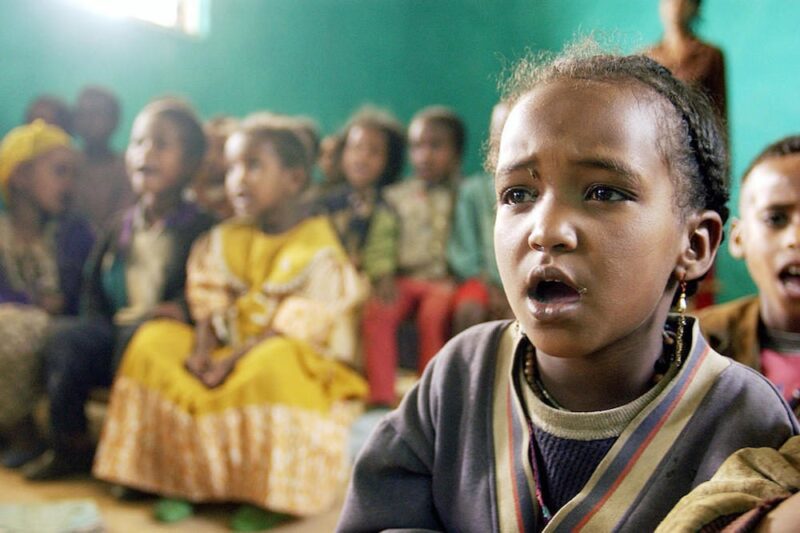Democracy & Governance
Combating Kids’ Fears: What It Takes -By Mudathir Hayatullahi

Today, many kids suffer from series of fears and when they have no guidance or someone to help them fight away the fearing attitudes in them, they end up becoming less privileged people in the society and always find some simple things to be the most difficult tasks in the world.
I will like to give some definitions of what fear is, give some scientific symptoms of fear and also analyze some possible causes of fear before giving clues on how to help these fearing kids.
Definition of fear according to the English Dictionary: A phobia, a sense of fear induced by something or someone.
According to Merriam-Webster Dictionary, fear is an unpleasant often strong emotion caused by anticipation or awareness of danger.
Another definition says Fear is a feeling induced by perceived danger or threat that occurs in certain types of organisms, which causes a change in behavior, such as fleeing, hiding, or freezing from perceived traumatic events.
Fear in human beings may occur in response to a certain stimulus occurring in the present, or in anticipation or expectation of a future threat perceived as a risky to body or life.
In humans and animals, fear is modulated by the process of cognition and learning. This fear is judged as rational or appropriate and irrational or inappropriate. An irrational fear is called a PHOBIA.
SCIENTIFIC SIGNS AND SYMPTOMS OF FEAR
Many physiological changes in the body are associated with fear,summarized as the fight or flight response. An inborn response for coping with danger, I works by accelerating the breathing rate (hyperventilation), heart rate, vasoconstriction of the peripheral blood vessels leading to blushing and sanskadania of the central vessels (pooling), increasing muscle tension including the muscle attached to each jai follicles to contract and causing “goose bumps”, or more clinically, piloerection (making a cold person warmer), sweating, increased blood glucose (hyperglycemia), increased serum calcium, increase in white blood cells called neutrophilic leukocytes, alertness leading to sleep disturbance and “butterflies in the stomach” (dyspepsia). This primitive mechanism may help a child survive by running away or fighting the danger. With the series of physiological changes, the consciousness realizes an emotion of fear.
CHILDHOOD FEAR: IS IT NORMAL FOR KIDS TO HAVE FEAR?
Yes, It is normal for children to feel afraid at times. Fear is an emotion that can help kids to be cautious. Things that are new, big, loud, or different can seem scary at first. Parents can help kids feel safe and learn to feel at ease.
WHAT DO KIDS FEEL AFRAID OF?
What kids feel afraid of changes as they grow. Some fears are common and normal at certain ages. For example: Infants feel stranger anxiety. When babies are about 8-9 months old, they can recognize the faces of people they know. That’s why new faces can seem scary to them. They may cry or cling to a parent to feel safe.
Toddlers feel separation anxiety. At some time between 10 months and 2 years, many toddlers start to fear being apart from a parent. They don’t want a parent to leave them at daycare, or at bedtime.
Young kids fear ‘pretend’ things. Kids ages 4 through 6 can imagine and pretend. But they can’t always tell what’s real and what’s not. To them, the scary monsters they imagine seem real. They fear what might be under their bed or in the closet. Many at afraid of the dark and at bedtime. Young kids may also br afraid of loud noises, like thunder or fireworks.
Older kids fear–real life dangers. When kids are 7 or older, monsters under the bed can’t scare much because they know they’re not real. At this age, some kids begin to fear things that could happen in real life. They may feel afraid about natural disasters they hear about. They may fear getting hurt or that a loved one could die.
Preteens and teens may have social fears. They might feel anxious about how they look or whether they will fit in. They may feel anxious or afraid before they give a report or answer questions in class, start a new school, take an advanced exams, or play in a big games.
SOME CAUSES OF FEAR
Kids develop specific fears as a result of learning. This has been studied in psychology as fear conditioning, starting with John B. Watson’s Little Albert experiment in 1920, which was inspired after observing a child with irrational fear of dogs. In this study, an 11-month old boy was conditioned to fear a white rat in the laboratory. The fear became generalized to include other white, furry objects, such as rabbit, dog, and even a ball of cotton.
Fear can be caused by experiencing or watching a frightened traumatic accident. For example, if a child falls into a well and struggles to get out, he or she may develop a fear of wells, heights (acrophobia), enclosed spaces (claustrophobia), or water (aquaphobia).
Fear is affected by cultural and historical context. For example, in the early 20th century, many Americans feared Polo, a disease that can lead to paralysis. There are consistent cross-cultural differences in how people respond to fear. Although many fears are learned, the capacity to fear is part of human nature.
Few is high only if the observed risk and seriousness both are high, and it is low if risk or seriousness is low.
HOW TO HELP OUR FEARING CHILDREN
When your child is afraid, you can help by doing these things
• Be patientPlease don’t force your children to confront their fears before they’re ready. That said, you also don’t want to overindulge the fear, which may work to validate it into something more concrete. Instead, talk them through the emotion they’re feeling in a calm and comforting manner.
Remember, while the fear may be totally mystifying to you, it’s still very real to them. Instead, be patient, empathetic and let them confront their own fears at their own pace.
• Lead by exampleDo you have a fear of your own? Perhaps you’re afraid of heights or don’t like being stuck in crowds. Sometimes the best way to teach your child how to overcome their fear is to ‘show’ them how it’s done. Lead by example and put yourself in situations where your child can witness how you navigate your way through your fears calmly and confidently. If Dad or Mum can do it, so can they!
• Introduce role modelsChildhood fears are common and for this reason there are a plethora of resources out there to assist you in teaching your child how to deal with them. Seek out age-relevant children’s books, toys and movies with characters and storylines that deal with overcoming fears and being brave. I’m sure this will also work.
• Give them controlFear can be a direct response to feeling physically threatened and helpless. Kids who are scared of the toilet, for example, are concerned they will be flushed down the loo; children who are afraid of dogs are worried they’re going to get bitten; kids who are so scared can scream when even an ordinary goat approaches their way; little ones who are terrified of the monster under the bed are feeling vulnerable on their own in the dark.
Giving your child an element of control in the management of their fear will go a long way towards making them feel safe. For example, if they are afraid of intruders in the night, make shutting and locking their bedroom window one of their night-time responsibilities.
• Encourage and praiseDismissing your child’s fears or teasing them will achieve absolutely nothing positive. Belittling or ignoring your child may force them to internalise their fear rather than deal with it and also break their trust in you. Instead, talk to your child about their fears, reassure them that you are there for them and encourage them to deal with their fears in their own way – and in their own time. It’s also important to praise their efforts – even mock up a ‘certificate’ to give them when they do something out of their comfort zone. It will go a long way towards building their confidence and overcoming their fears.
• Answer their questionsAlthough childhood fears are usually based on imaginary or exaggerated perceptions, that doesn’t mean they aren’t very real to your child. Talk with them about their fears and try and understand where they’re coming from.
Encourage your child to ask you any questions they like and do your best to answer them in gentle, age-appropriate ways. If you don’t know all the answers, research them together at the library or online.
• Little stepsYou can help your child conquer their fear by gentle exposure to that fear, which gradually increases with time and practice. You can do this in consultation with your child.
For example, if he’s afraid of the bath, you can start by having a small amount of water in the bath, then gradually add more. Use a jug to pour a little on his hands, then progress to pouring a little on the back of his neck. Keep taking small steps until he feels comfortable and confident.
• Don't be angry, stay calm It’s never a pleasant experience for a parent to witness their child in a state of distress and sometimes parents may feel helpless in the face of it.
Responding angrily or with humour will often result in further distress for your child. Remaining calm and consistent will ensure a quicker resolution.
When your child is in a state of fear, they’re not able to discuss the issues reasonably. Just be there to soothe and comfort.








